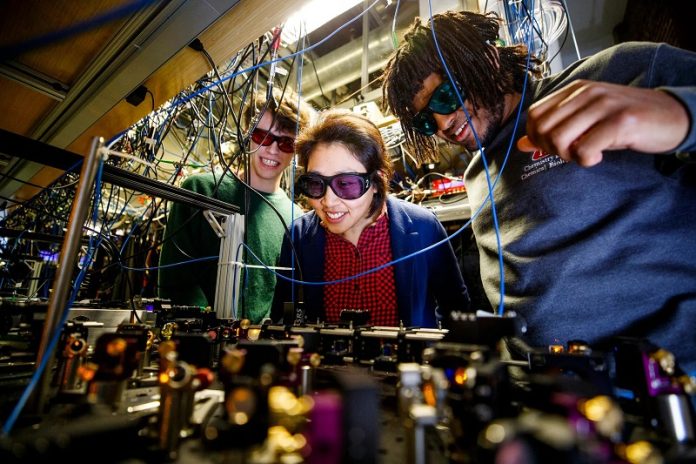
For the first time ever, scientists have successfully trapped molecules and used them for quantum operations—a breakthrough that could make quantum computing even more powerful.
Until now, molecules have never been used in quantum computing, despite their rich and complex internal structures. Scientists thought they were too complicated and too unstable to be controlled.
Instead, researchers focused on simpler particles, such as trapped ions, neutral atoms, and superconducting circuits, to serve as qubits—the basic units of quantum computing.
But a Harvard University team, led by Professor Kang-Kuen Ni, has finally done what the field has been trying to achieve for 20 years.
Their success, published in Nature, proves that molecules can be controlled well enough to serve as qubits, unlocking new possibilities for quantum technology.
Quantum computers work very differently from regular computers. Instead of using simple binary bits (0s and 1s), quantum computers use qubits, which can exist in multiple states at once. This makes quantum computers exponentially faster and capable of solving problems that traditional computers cannot handle.
Quantum computing could revolutionize fields like medicine, science, and finance, helping researchers solve complex equations, simulate molecules for drug discovery, and even improve financial modeling.
While scientists have dreamed since the 1990s of using molecules for quantum computing, the problem has always been stability. Molecules are unpredictable and move too much, disrupting the delicate quantum state needed for operations.
However, Ni’s team found a solution: trapping molecules in an ultra-cold environment and controlling them using optical tweezers—highly focused laser beams that manipulate tiny objects. This freezes the molecules, minimizing movement and allowing researchers to control their quantum states.
The researchers trapped sodium-cesium (NaCs) molecules and used their electric dipole interactions to perform quantum operations. By carefully controlling how the molecules rotated, the team managed to entangle two molecules, creating a quantum state called a two-qubit Bell state with 94% accuracy.
Entanglement is what makes quantum computers so powerful. It allows two qubits to become linked, meaning changing one instantly affects the other, no matter how far apart they are. To achieve this, the team used a key quantum circuit called an iSWAP gate, which swaps the states of two qubits and applies a phase shift—a critical step in creating entanglement.
This success is a major step toward building a quantum computer using molecules. According to Annie Park, a postdoctoral researcher and co-author of the study:
“This is the last building block needed to create a molecular quantum computer. The unique properties of molecules give us many opportunities to advance quantum technologies.”
To ensure their experiment worked correctly, the team carefully measured the two-qubit Bell state and analyzed possible errors caused by motion. This also gave them ideas on how to improve stability and accuracy in future experiments.
Now that the researchers have proven molecules can be used as qubits, they believe there is huge potential for new discoveries in quantum computing. Molecules offer unique advantages over traditional qubits, including their rich internal structure, which could open the door to even more powerful quantum operations.
“There’s a lot of room for innovation and new ideas,” Ni said. “I’m excited to see what comes next.”
This groundbreaking work brings us one step closer to the future of quantum computing, where molecules could help unlock unimaginable computing power.
Source: Harvard University.



